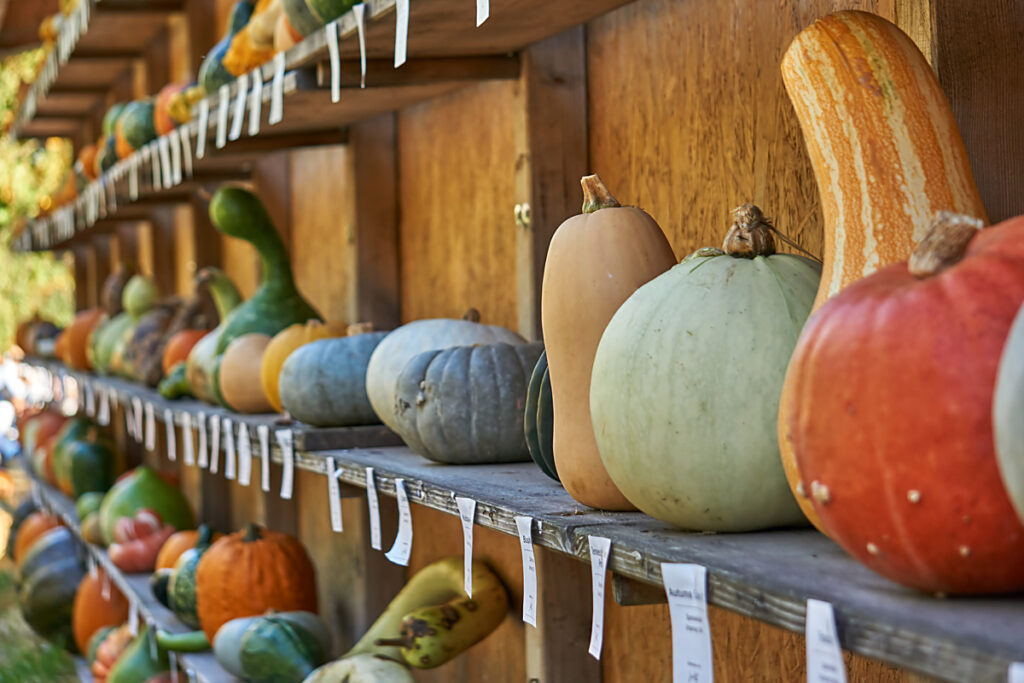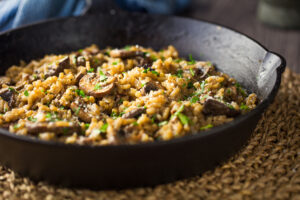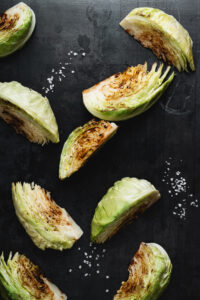By Holly Larson, MS, RD
Published October 3, 2017
The sun is setting sooner, the nights are getting cooler and wool socks are starting to sound like a cozy idea. This is the perfect time to celebrate the seasonal gems of autumn! Head to your local market and fill your basket with these fall produce picks.
Pumpkin
“Fall is the season for winter squash — satisfying, hearty vegetables perfect for a cool night,” says Academy Spokesperson Robin Foroutan, MS, RDN. “While butternut squash is a go-to winter vegetable, pumpkin is another delicious squash, even after Halloween! Pumpkin is full of fiber and vitamin A, which is great for your skin and eyes.” Foroutan likes to balance pumpkin’s sweetness with savory herbs, such as sage and curry. “Dishes such as pumpkin curry soups are the perfect balance between sweet and savory. Use coconut oil and coconut milk instead of butter and cream to switch up the flavor profile. Turmeric is curry’s base, so you get great anti-inflammatory benefits with each bite.”
Beets
Beets are edible from their leafy greens down to the bulbous root. The leaves are similar to spinach and are delicious sautéed. The grocery store most likely will carry red beets; your local farmers market may have more interesting varieties, such as golden or bull’s blood, which has a bullseye pattern of rings. The red color in beets is caused by a phytochemical called betanin, making beet juice a natural alternative to red food coloring. Beets are rich in naturally occurring nitrates and may help to support healthy blood pressure. Roasting or steaming beets whole takes the fuss out of peeling — the skin easily slides off after cooking. They also are delicious raw, shredded and tossed in salads or thinly sliced and baked into chips.
Sweet Potato
Sweet potatoes charge ahead of white potatoes in terms of fiber and vitamin A. “Sweet potatoes can make a great breakfast side dish” suggests Foroutan. “Cube left-over baked potato and sprinkle them with cumin and coriander. Toast them in the oven until golden and serve them with poached eggs and sliced avocado.”
Spaghetti Squash
Spaghetti squash is a fun, kid-friendly vegetable that is a lower-calorie and gluten-free alternative to grain-based pasta. Cut it in half to reveal a pocket of seeds; scoop those out and pop the two halves into the microwave or oven and cook until tender. Scrape a fork into the flesh and spaghetti-like strands appear! Voilà! Toss with pesto or marinara sauce for a quick veggie side dish.
Kale
Kale is a current media darling — from food writers to restaurant chefs, and farmers markets to school cafeterias — we can’t get enough of this luscious leafy green and with good reason. Kale is a nutrient powerhouse. It tastes sweeter after a frost and can survive a snowstorm. If you plant kale in your garden, you can dig it out of the snow and serve fresh salad in January! One cup of raw kale has only 8 calories and is loaded with vitamins A, C and K as well as manganese. Kale is great sautéed and cooked in soup, but also is excellent raw in salad; simply remove tough stems, slice into thin slivers and pair with something a bit sweet such as carrots or apples. One advantage of using kale for your leafy greens is that you can add your dressing ahead of time; the kale becomes more tender and delicious, not wilted.
Pears
When we can buy fruits year-round, we tend to forget they do have a season. However, pears are the most delicious in the fall when they’re at their peak. Pears are unique in that they do not ripen on the tree; they will ripen at room temperature after they’re picked. How do you know when they are ready to eat? Check the neck! If the fruit near the stem gives to a little pressure, it is ripe. There are a wide range of pear flavors and textures. And, just like apples, some are excellent eaten fresh while others are best cooked or canned for the winter. Try pears on the grill, poached in red wine, tucked into a panini, pureed into soup or a smoothie, or simply sliced with cheese and wine. If you eat the peel too, one medium pear has 6 grams of fiber – that’s 20 percent of the daily recommendation!
Okra
Okra commonly is fried, but also is wonderful in more nutritious dishes. Around the world, chefs cherish the thickening properties of the seed pods in dishes from Louisiana gumbo to Indian curries and other stews. If you wish to minimize the thickening property, try okra briefly stir-fried. The pods are high in vitamins K and C, a good source of fiber and folate and low in calories. At the market, look for pods that are no longer than 4 inches and are bright green in color and firm to the touch.
Parsnips
Parsnips are cousins to carrots — they have the same root shape but with white flesh. They’re typically eaten cooked, but also can be eaten raw. One-half cup of cooked parsnips is full of fiber (3 grams) and contains more than 10 percent of the daily values of vitamin C and folate. Try these pale beauties roasted, pureed into soup or mashed. You can even top a shepherd’s pie with mashed parsnips instead of the traditional mashed potatoes!
Cranberries
Fall is the time to get to know these tart berries and their wealth of nutritional benefits. Cranberries may help protect from urinary tract infection. They contain a compound called proanthocyanidin which prevents harmful bacteria from sticking to your bladder wall. Fresh and dried cranberries pair well with a variety of meats and poultry. Fresh cranberries can be eaten raw but often are cooked. Dried cranberries are delicious in grain and vegetable salads and make a healthy snack on the go.
Reviewed July 2017Holly Larson, MS, RD, is a nutrition expert, freelance writer and owner of Grass Roots Nutrition based in Oxford, OH.






